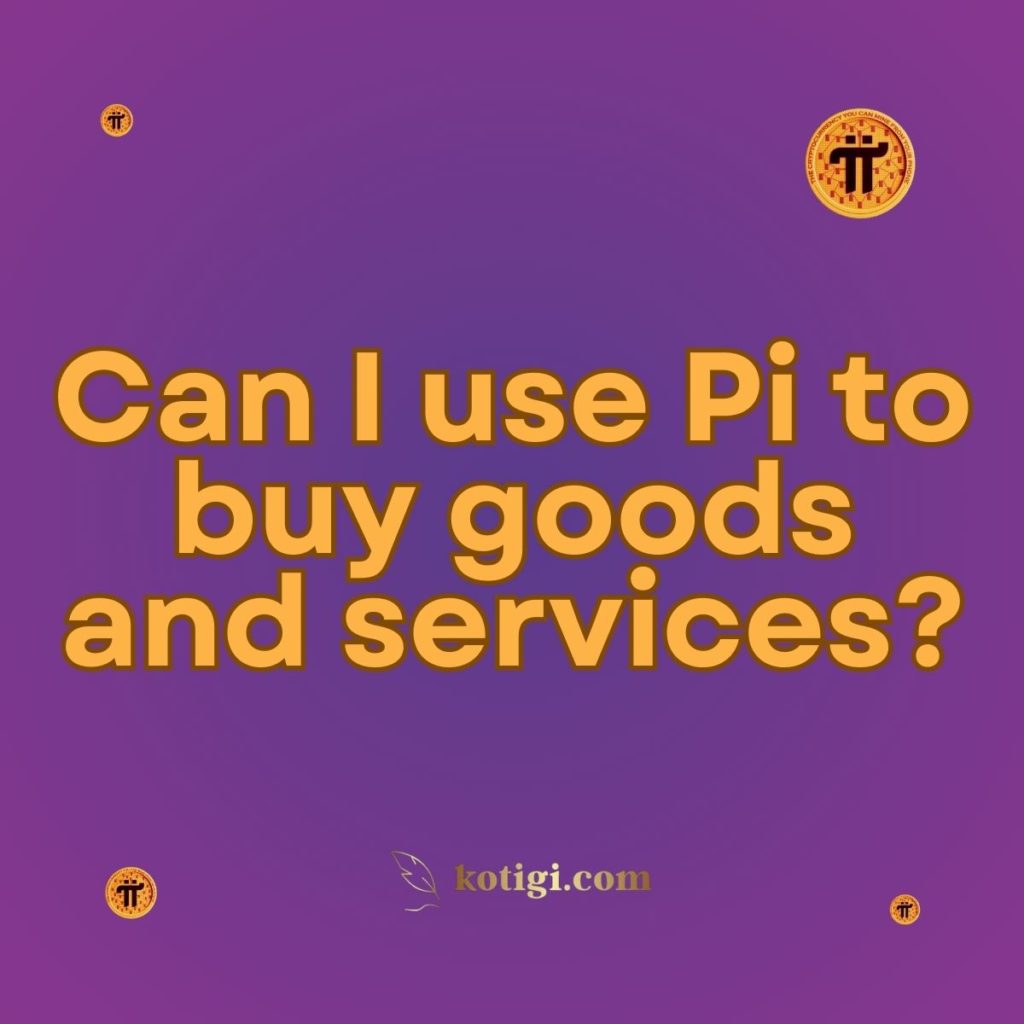
Can I use Pi to buy goods and services?
Yes, you can use Pi to buy goods and services, but the extent to which you can do so depends on the development stage of the Pi Network and the adoption by merchants. Here’s an overview of how Pi can be used for transactions:
1. Pi Network’s Vision
1.1. Creating a Usable Cryptocurrency:
The Pi Network was designed with the goal of becoming a widely used cryptocurrency that facilitates everyday transactions. The ultimate vision is for Pi to be used like any other form of digital currency, allowing users to purchase goods and services, both online and offline.
1.2. Growing Ecosystem:
As the Pi Network continues to grow, the developers aim to expand its ecosystem by encouraging businesses and service providers to accept Pi as a form of payment. This would make Pi more versatile and useful for its community of users.
2. Current State of Pi Transactions
2.1. Testnet Phase:
Currently, the Pi Network is in its testnet phase, meaning the Pi coins you mine are still in a testing environment. During this phase, transactions within the network are limited to the app’s ecosystem and pilot projects. This means that while some businesses or platforms may accept Pi as part of experimental transactions, it is not yet a widely accepted form of payment.
2.2. Pi Ecosystem Development:
Some early adopters and businesses within the Pi Network community have started accepting Pi for goods and services in a limited capacity. These transactions typically occur within the Pi app or through community-led marketplaces where Pi can be exchanged for various products or services.
3. Mainnet and Future Potential
3.1. Transition to Mainnet:
Once the Pi Network transitions to its mainnet (the fully operational network), Pi coins will have real value, and more businesses are expected to start accepting Pi as payment. This shift will be crucial in determining how widely Pi can be used for purchasing goods and services.
3.2. Merchant Adoption:
For Pi to become a common payment method, widespread merchant adoption is necessary. The Pi Network team is likely to focus on building partnerships with businesses to enable the use of Pi in everyday transactions. The more merchants that accept Pi, the more practical it will become for users to spend their coins.
4. Using Pi in Transactions
4.1. Peer-to-Peer Transactions:
Even before widespread merchant adoption, users can engage in peer-to-peer (P2P) transactions using Pi. For example, users within the Pi community can trade goods or services directly, using Pi as the currency.
4.2. Marketplaces and Platforms:
There are emerging marketplaces within the Pi Network community where users can buy and sell items using Pi. These platforms are often community-driven and help users exchange Pi for tangible products or services.
5. Legal and Regulatory Considerations
5.1. Compliance with Local Laws:
As Pi transitions to the mainnet and gains value, users and businesses will need to comply with local regulations regarding cryptocurrency transactions. This might include reporting income, paying taxes, or adhering to specific financial regulations.
5.2. Monitoring Future Developments:
The legal landscape for cryptocurrencies is continually evolving, and it will be important for both users and businesses to stay informed about the legal implications of using Pi for transactions.
Conclusion
While Pi can be used to buy goods and services, its utility is currently limited and mainly confined to within the Pi Network community. As the network evolves and transitions to the mainnet, the potential for using Pi as a regular form of payment is expected to grow. The success of Pi in becoming a widely accepted currency will depend on its adoption by merchants and the development of the Pi ecosystem. For now, you can explore early opportunities to use Pi for transactions, especially within the community-led marketplaces and peer-to-peer exchanges.





